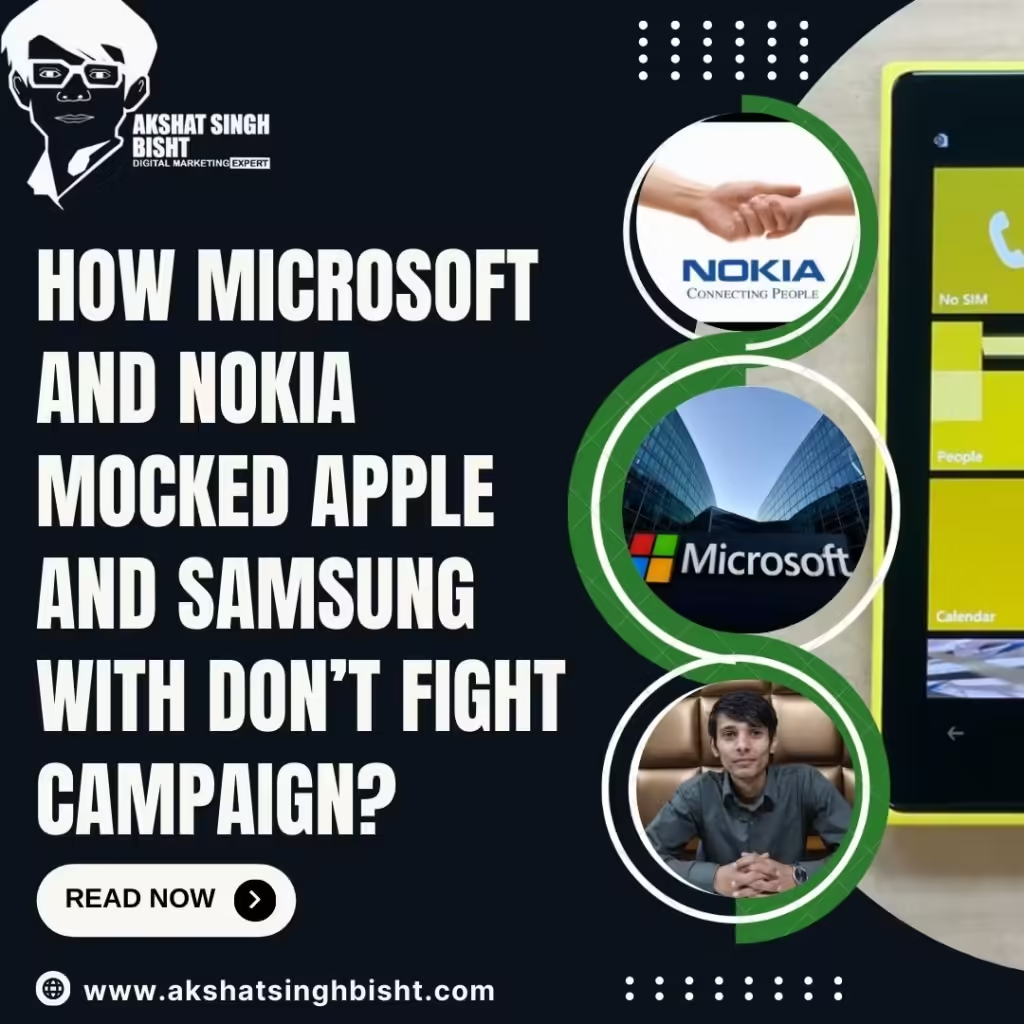Microsoft’s 2013 “Don’t Fight” campaign tapped into the growing rivalry between Samsung and Apple by humorously portraying the ongoing “battle” between their loyal customers. This campaign was launched to promote the Nokia Lumia 920 smartphone, a Windows-powered device, at a time when the competition between Apple’s iPhone and Samsung’s Galaxy series was particularly intense. The ad painted Microsoft as a refreshing alternative, suggesting that users should break free from the “Apple vs. Samsung” debate by choosing Nokia, offering them a unique yet powerful experience.

Campaign Objectives
The “Don’t Fight” campaign’s objectives were clear:
Campaign Strategy and Execution
The campaign was centered around a commercial titled Don’t Fight: Switch to the Nokia Lumia 920, set at a wedding where guests divide into factions based on their phone brands. iPhone users on one side of the room and Samsung fans on the other exchange subtle insults, which quickly escalate into a physical brawl. Amid the chaos, two waitstaff with Lumia 920 devices stand unaffected, observing the fight and remarking, “You think if they knew about the Nokia Lumia, they’d stop fighting?”
This tongue-in-cheek, cinematic approach allowed Microsoft to depict the Windows phone as a refreshing choice and offer a “peaceful” third option that avoided the need to “pick sides” in the heated Apple vs. Samsung debate.
Key Elements of the Campaign
Target Audience
The campaign aimed to reach several distinct audiences:
Media Channels and Promotion
The “Don’t Fight” ad was promoted through multiple channels:
Campaign Outcomes and Impact
Campaign Analysis and Key Takeaways
Conclusion
The “Don’t Fight” campaign remains a well-executed case study on how a brand can use humor and cultural insights to navigate competitive markets. By positioning itself as the alternative to Apple and Samsung and leveraging consumer frustration with tech loyalty, Microsoft reinforced its brand identity while appealing to those who sought a fresh perspective in the smartphone ecosystem. The campaign’s impact is a testament to the effectiveness of humor, relatability, and cultural awareness in a successful advertising strategy.
Akshat’s passion for marketing and dedication to helping others has been the driving force behind AkshatSinghBisht.com. Known for his insightful perspectives, practical advice, and unwavering commitment to his audience, Akshat is a trusted voice in the marketing community.
If you have any questions simply use the following contact details.
Welcome ! Let me know how I can assist you today.


